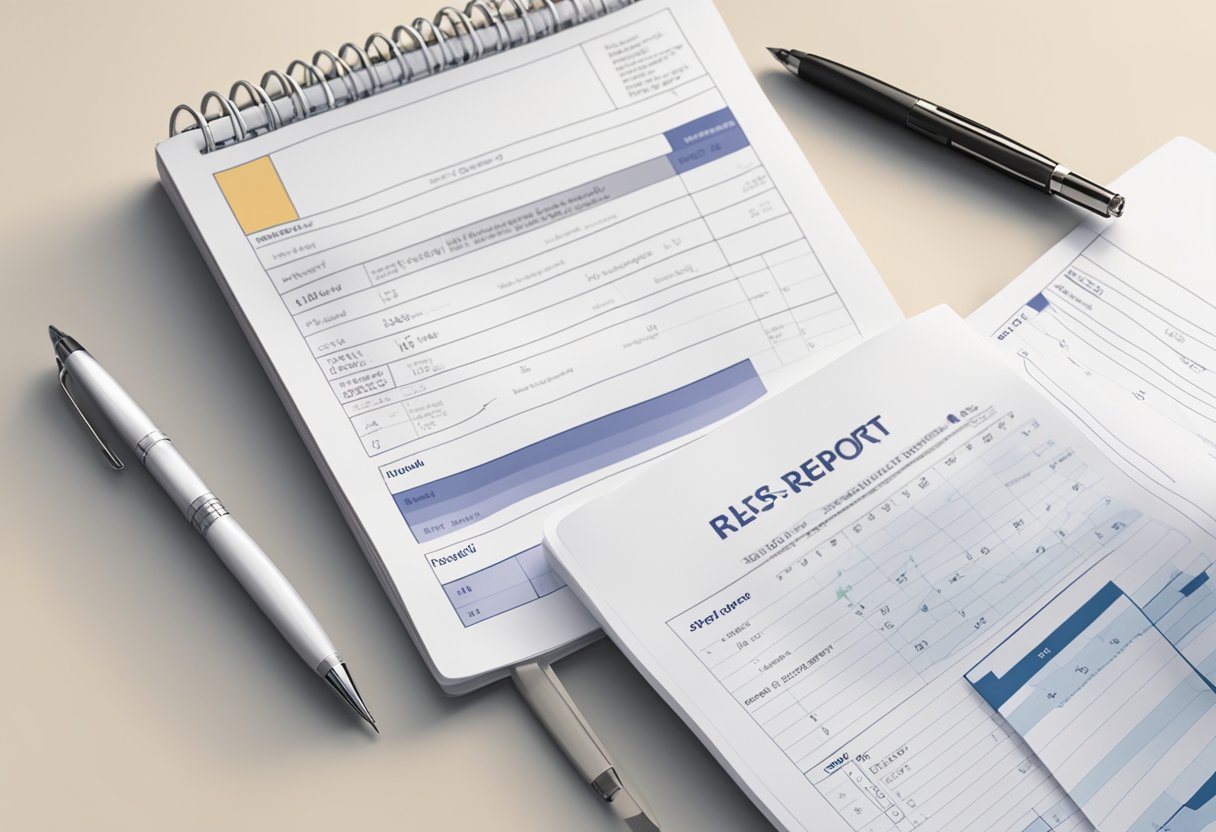So, you want to know “Can IELTS Results be Combined?”, maybe you have an important study abroad dream and you’d require a certain pass in IELTS (English test fluency). But, you’ve taken two IELTS results and you’re hoping to combine them and submit. Well, today, you’ll learn about the possibility.
Getting IELTS
IELTS is a widely recognized test that evaluates the English language proficiency of non-native English speakers. It is a requirement for those who want to study or work in countries where English is the primary language. The test is divided into four sections: Listening, Reading, Writing, and Speaking. Each section is scored separately, and the scores are then combined to give an overall score.
Can IELTS Results be Combined
One common question among IELTS test-takers is whether they can combine their results from multiple tests. The answer is yes, but there are specific rules that govern the combination of IELTS results. The tests must have been taken within six months of each other, and all four sections of the test must have been taken in both tests. It is not possible to combine test results that were written more than six months apart.
Key Takeaways
- IELTS is a test that evaluates the English language proficiency of non-native English speakers.
- IELTS test-takers can combine their results from multiple tests, but there are specific rules that govern the combination of IELTS results.
- The tests must have been taken within six months of each other, and all four sections of the test must have been taken in both tests.
Understanding IELTS Results

The IELTS exam results are graded from 1 to 9, with 1 being the lowest score and 9 the highest. Each component of the test – Writing, Speaking, Reading, and Listening – is given an individual score, so the overall exam result will be made up of a score for each component and an overall band score.
The individual IELTS scores for Listening, Reading, Writing, and Speaking are all equally weighted. The overall band score is calculated by taking the average of the four individual scores. For example, if a student scores 7 in Listening, 6.5 in Reading, 6.5 in Writing, and 7 in Speaking, their overall band score would be 6.875, which would be rounded up to 7.
When a student receives their IELTS Test Report Form, it will show the individual scores they achieved in each of the four parts of the IELTS test, as well as their overall band score. The IELTS scale helps organizations understand a student’s level of English.
It is important to note that the appropriate and accurate use of the English language is the primary focus of the IELTS test. The test is designed to assess a student’s ability to communicate effectively in English, and the band score reflects the student’s level of English proficiency.
In some cases, students may want to combine their IELTS results from two different tests. It is possible to do so, but only if the tests were taken within a certain period of time and under certain conditions. Students should check with the institution or organization they are applying to for specific requirements and guidelines regarding combining IELTS results.
Overall, understanding IELTS results is crucial for international students who are planning to study or work in an English-speaking country. The IELTS test is a reliable and valid measure of a student’s English language proficiency, and the band score provides a clear indication of a student’s level of English.
IELTS Test Formats

There are two formats for the IELTS test: paper-based and computer-delivered. Both formats assess the four language skills: listening, reading, writing, and speaking.
Paper-Based IELTS
In the paper-based IELTS format, test-takers sit at a desk with the question papers and answer sheets for the listening, reading, and writing tests in an official IELTS test center. They will write their answers in either pen or pencil. The speaking test is conducted face-to-face with a certified IELTS examiner.
The paper-based IELTS test has been available for over 30 years and is still a popular option for test-takers who prefer to take the test on paper.
Computer-Delivered IELTS
The computer-delivered IELTS format is a newer option that has been introduced to provide test-takers with more choice. In this format, test-takers complete the listening, reading, and writing sections on a computer. The speaking test is still conducted face-to-face with a certified IELTS examiner.
One of the advantages of taking the IELTS on a computer is that test-takers can see the remaining time for each section on the screen. They can also highlight text, make notes, and change their answers easily.
Another advantage of the computer-delivered IELTS is that test-takers can receive their results faster. Test-takers can receive their results within 3-5 days after taking the test.
In conclusion, both paper-based and computer-delivered IELTS formats assess the four language skills: listening, reading, writing, and speaking. Test-takers can choose the format that suits their needs and preferences.
How to Check IELTS Results
Once a candidate has taken the IELTS test, they can check their results online. The official IELTS website provides a platform for candidates to check their results online. In order to check the result, the candidate needs their IELTS test report form (TRF) number, date of birth, and the date of the IELTS test.
The IELTS test report form is an official document that shows the candidate’s test scores and can be used as proof of their English language proficiency. The TRF number is a unique identification number that is assigned to each candidate after they have taken the IELTS test. The TRF number is printed on the test report form and is required to check the IELTS result online.
To check the IELTS result online, the candidate needs to visit the official IELTS website and click on the “Check Your IELTS Result” link. They will then be redirected to a page where they need to enter their TRF number, date of birth, and the date of the IELTS test. Once the information is entered, the candidate can view their IELTS result.
Candidates can also receive their IELTS result by post. The official test report form is posted to the candidate’s registered address. The test report form is usually posted 13 days after the test date for paper-based tests and 3-5 days after the test date for computer-delivered tests.
In case the candidate does not receive their official test report form within the expected time frame, they can contact the IELTS test center where they took the test. The test center can provide the candidate with information on how to obtain their official test report form.
Overall, checking IELTS results is a simple process that can be done online or by post. The candidate needs their TRF number, date of birth, and the date of the IELTS test to check their result online. If the candidate does not receive their official test report form by post, they can contact the IELTS test center for assistance.
Retaking the IELTS Exam
If a candidate is not satisfied with their IELTS exam results, they can retake the exam to try and achieve a better score. However, there are some rules and guidelines that candidates should be aware of before retaking the exam.
Firstly, candidates must wait for a minimum of 90 days before retaking the exam. This rule applies to both the IELTS Academic and IELTS General Training tests. It is important to note that candidates cannot retake the exam within the same month of their previous test date.
Secondly, candidates must register for the exam again and pay the exam fee. The exam fee may vary depending on the country and location where the exam is being taken.
It is important to note that when retaking the exam, the candidate’s previous test results will still be valid for two years. This means that if a candidate achieves a better score in their second attempt, they can combine the results of both tests to achieve a higher overall score.
Candidates should also be aware that retaking the exam does not guarantee a better score. It is important to prepare thoroughly for the exam and identify areas where improvement is needed to achieve a better score.
In conclusion, candidates can retake the IELTS exam if they are not satisfied with their previous test results. However, there are rules and guidelines that must be followed, and the decision to retake the exam should be made after careful consideration and preparation.
IELTS Results for Different Purposes

IELTS is a widely accepted English language proficiency test that has become a requirement for individuals seeking to study, work, or migrate to countries where English is the primary language. The IELTS test results are used for different purposes, including academic institutions, employment, and immigration.
Academic Institutions
Many universities and colleges in the US, UK, Australia, Canada, and New Zealand require international students to provide IELTS scores as proof of their English language proficiency. The IELTS Academic test is designed to assess the language skills needed for academic study. The test measures the ability to read, write, listen, and speak in English. The minimum IELTS score required for admission varies from institution to institution.
Employment
Employers in English-speaking countries may require job applicants to provide IELTS scores to demonstrate their English language proficiency. The IELTS General Training test is designed to assess practical language skills in social and workplace contexts. The test measures the ability to read, write, listen, and speak in English. The minimum IELTS score required for employment varies from employer to employer.
Immigration
IELTS scores are also used by immigration authorities in English-speaking countries to assess the English language proficiency of visa applicants. For instance, UK Visas and Immigration requires applicants to achieve a minimum score of 4.0 in the IELTS Life Skills test, which is designed to assess speaking and listening skills in English. The test is suitable for individuals who need to prove their English speaking and listening skills at Common European Framework of Reference for Languages (CEFR) levels A1 or B1. In addition, some countries, such as Canada, require IELTS scores as part of their immigration process.
In conclusion, IELTS results are used for different purposes, including admission to academic institutions, employment, and immigration. The IELTS test is recognized by many universities, employers, and immigration authorities in English-speaking countries.
Conclusion
In conclusion, combining IELTS results is an option for test takers who wish to combine their scores from two separate tests. This can be useful for individuals who did not achieve their desired score on their first attempt and wish to improve their overall score. However, there are some misunderstandings regarding the process of combining IELTS results that need to be cleared up.
It is important to note that only test takers who have taken two IELTS tests within six months of each other are eligible to combine their scores. Additionally, the scores must be from the same version of the test, either Academic or General Training.
For non-users of IELTS, it is important to understand that IELTS is an internationally recognized English language proficiency test. It is accepted by many universities and employers worldwide, including LinkedIn, which recognizes IELTS scores as a way to demonstrate English language proficiency.
The International English Language Testing System (IELTS) is jointly owned by IDP: IELTS Australia, the British Council, and Cambridge Assessment English. These organizations work together to ensure the test is fair, consistent, and reliable.
The Test Report Form (TRF) is the official document that contains the test taker’s scores for each of the four language skills: Listening, Reading, Writing, and Speaking. The TRF is valid for two years from the date of the test.
For individuals applying for immigration to Canada, the IELTS test is one of the approved language tests for the Express Entry system. The system uses the Comprehensive Ranking System (CRS) to rank candidates based on their language proficiency, among other factors.
The Electronic Test Report Form (eTRF) is an electronic version of the TRF that is available to test takers who have taken the computer-delivered IELTS test. The eTRF is available for download through the test taker’s online account and is considered an official document.
Overall, combining IELTS results can be a useful option for individuals looking to improve their overall score. It is important to understand the eligibility requirements and to ensure that the scores being combined are from the same version of the test.
Frequently Asked Questions

Which IELTS score will be considered for NMC IELTS exemption?
The Nursing and Midwifery Council (NMC) requires overseas nurses to take the International English Language Testing System (IELTS) test. The NMC only considers the score of the Academic version of the IELTS test for exemption purposes.
What is the IELTS score requirement for nurses in different countries?
The IELTS score requirement for nurses varies depending on the country they are applying to. For example, in the UK, nurses need to score at least 7.0 in all four sections of the Academic IELTS test. In the US, the IELTS Academic test score requirements range from 6.5 to 7.5 depending on the state.
What are the NMC English language requirements for overseas nurses?
The NMC requires overseas nurses to demonstrate their English language proficiency by achieving the required score in the Academic IELTS test. The NMC requires a minimum score of 7.0 in each of the four components of the Academic IELTS test: reading, writing, listening, and speaking.
Can I combine my two IELTS results to meet NMC requirements?
Yes, you can combine your two IELTS results to meet the NMC requirements. However, there are rules governing the combination of IELTS results. You must have taken the two tests within six months, and you cannot combine tests written more than six months apart. You should undergo tests in all four areas/ sections at the same time.
What happens if my second IELTS score is lower than the first?
If your second IELTS score is lower than the first, you cannot combine the two scores. You need to retake the IELTS test and achieve the required score in all four components of the Academic IELTS test within six months.
Is it possible to combine IELTS scores for immigration to Canada?
Yes, it is possible to combine IELTS scores for immigration to Canada. However, the scores must be from the same version of the IELTS test (Academic or General Training), and they must have been obtained within the last two years. You must also have taken the test in all four components at the same time.
